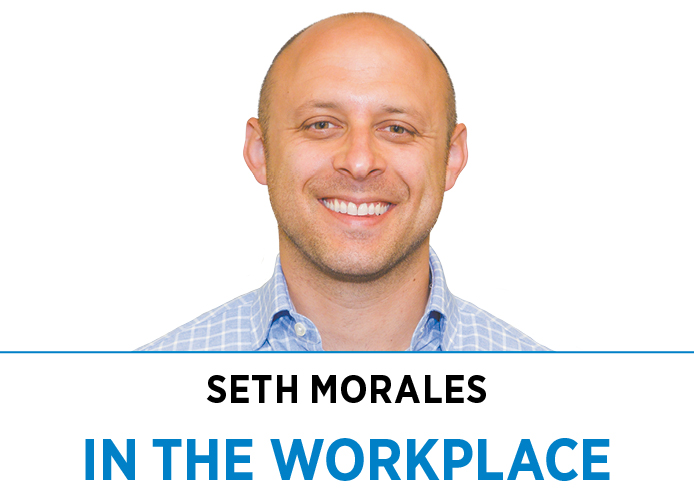Subscriber Benefit
As a subscriber you can listen to articles at work, in the car, or while you work out. Subscribe Now This pandemic has thrown the work sphere for the biggest loop we’ve seen in decades—the rise of remote work, a revolving door of quarantining teams, and (our favorite recurring character) the Great Resignation. But, our “new normal” has yet to be nailed down.
This pandemic has thrown the work sphere for the biggest loop we’ve seen in decades—the rise of remote work, a revolving door of quarantining teams, and (our favorite recurring character) the Great Resignation. But, our “new normal” has yet to be nailed down.
A record 4.5 million people quit or changed their jobs by November 2021. This was the fourth time last year that the number of people quitting broke an all-time record. The Great Resignation is far from over; season 2 is coming, and with it signals of a broader shift in the perception of what it means to work—and to work happily.
Like being faced with life reflections such as, “What fulfills me? What is my purpose?” Pandemic turnover isn’t as simple as people delaying previously scheduled moves. At its core is the realization that we all have limited time. People want work that gratifies them and gives more meaning—and they are leaving to find it.
A combination of pandemic burnout and self-reflection is pouring gasoline into the engine of the exodus. Creative work trends will characterize the next phase of the ever-tighter labor market—namely, the idea of fractional work.
A single job doesn’t have to be everything to everyone anymore. It’s rare to cultivate your passions, seek mentorship and fill the wallet with the same role. Fractional employment is a model in which employees work part time for several different employers during the week—able to flex their interest muscle in one role, their accumulated expertise in another.
Fractional work has been around for years but is growing in popularity among small and midsize businesses. It’s a growing trend we are seeing as a result of post-pandemic needs, and we should begin offering this model to our workforce or certain positions within our companies.
A fractional employee might work, for example, at two different employers for two days per week and a third another day. Fractional employees can sell pieces of their time, skill set and knowledge to different companies and have control over their workload with them.
For the employee, fractional work offers variety, better balance, more control and the ability to sculpt work life to dovetail their passions. But, the benefits of fractional work don’t end with the individual.
Organizations have the advantage of financial flexibility, instant access to talent and the ability to tailor their team to specific needs. Considering the high rates of pandemic turnover, employers could support their teams with fractional work by allowing them flexibility to pursue their passions, while retaining existing team members’ know-how specific to the original company. New hires take years to learn the ins and outs that are second nature to veteran employees.
Fractional work is happening now, and it’s happening smoothly. I spoke to my friend Eric Smith, an executive at EDGE Mentoring, about his fractional professional approach. He said his roles allow him to focus on purpose-driven projects through a non-profit while giving him a chance to work on his technical skills as a former CFO to help another holding company raise capital and do acquisitions.
“It opened a whole new world to me,” he said. I have seen more switchover to a fractional method, such as another leader who continues to serve in the HR suite while providing executive coaching on the side.
Fractional work might be the tool we have been searching for to battle burnout. In essence, it’s a form of job sculpting, which is “the art of forging a customized career path in order to increase the chance of retaining talented people,” according to Harvard Business Review. How many people on your team do you have working fractionally? Instead of contracting flex team members when you need to scale up or down, consider using experienced employees fractionally and sharing their expertise and expense with another company.
To be fair, fractional work can’t be the only antidote to all pandemic turnover aches and pains. Executive roles often require 50% technical work and 50% team vision. We might lose out on the mental coaching aspect when it comes to part-time executive leaders. Prioritizing core work and stripping away “non-essentials” will be a downside and something we need to plan around to keep culture intact.
But, in this new reality, a fractional model might be worth it for a portion of your workforce. Remote and hybrid work is already limiting face time in favor of more control and balance for both employer and employee—and the desire for flexibility is trending over the need for face-to-face interactions at work.
Alongside remote capabilities breaking down global barriers, fractional roles are giving us a glimpse into what the workforce of the future will look like. It won’t necessarily be a quick win for your business but is instead part of a long-term strategy we need to start thinking about now. Employees are already leveraging their power to tailor their professional lives, and this trend won’t end anytime soon. Are you asking yourself, “What am I doing to future-proof my business?”•
__________
Morales is CEO of Morales Group Staffing, a recruitment and staffing agency in Indianapolis.
Please enable JavaScript to view this content.
